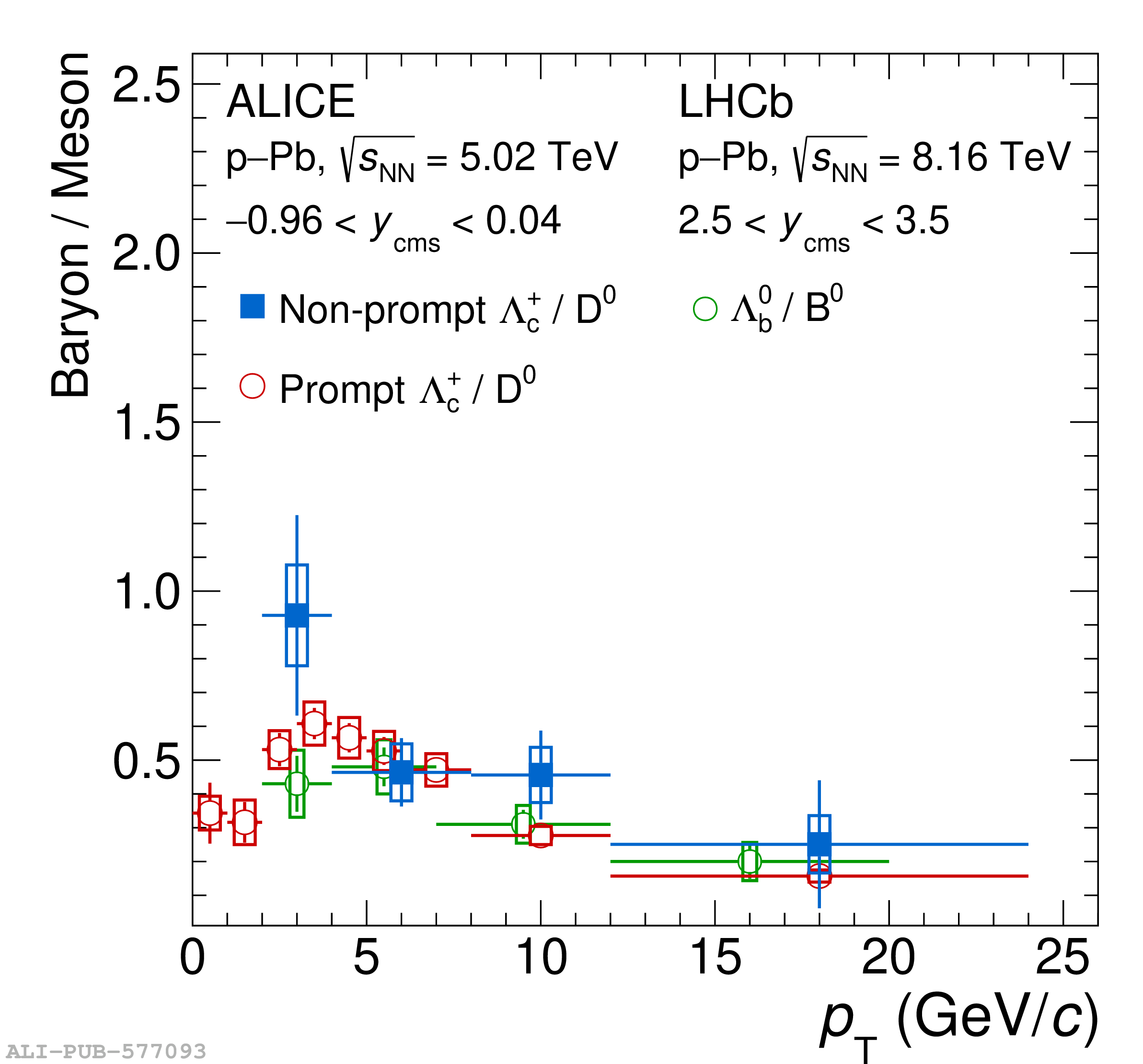The production cross sections of $\mathrm {D^0}$, $\mathrm {D^+}$, and $\mathrm {\Lambda_{c}^{+}}$ hadrons originating from beauty-hadron decays (i.e. non-prompt) were measured for the first time at midrapidity in proton$-$lead (p$-$Pb) collisions at the center-of-mass energy per nucleon pair of $\sqrt{s_{\mathrm{NN}}} = 5.02$ TeV. Nuclear modification factors ($R_{\mathrm {pPb}}$) of non-prompt $\mathrm {D^0}$, $\mathrm {D^+}$, and $\mathrm {\Lambda_{c}^{+}}$ are calculated as a function of the transverse momentum ($p_{\mathrm T}$) to investigate the modification of the momentum spectra measured in p$-$Pb collisions with respect to those measured in proton$-$proton (pp) collisions at the same energy. The $R_{\mathrm {pPb}}$ measurements are compatible with unity and with the measurements in the prompt charm sector, and do not show a significant $p_{\mathrm T}$ dependence. The $p_{\mathrm T}$-integrated cross sections and $p_{\mathrm T}$-integrated $R_{\mathrm {pPb}}$ of non-prompt $\mathrm {D^0}$ and $\mathrm {D^+}$ mesons are also computed by extrapolating the visible cross sections down to $p_{\mathrm T}$ = 0. The non-prompt D-meson $R_{\mathrm {pPb}}$ integrated over $p_{\mathrm T}$ is compatible with unity and with model calculations implementing modification of the parton distribution functions of nucleons bound in nuclei with respect to free nucleons. The non-prompt $\mathrm {\Lambda_{c}^{+}/D^{0}}$ and $\mathrm{D^+/D^0}$ production ratios are computed to investigate hadronisation mechanisms of beauty quarks into mesons and baryons. The measured ratios as a function of $p_{\mathrm T}$ display a similar trend to that measured for charm hadrons in the same collision system.
JHEP 11 (2024) 148
HEP Data
e-Print: arXiv:2407.10593 | PDF | inSPIRE
CERN-EP-2024-193
Figure group






















